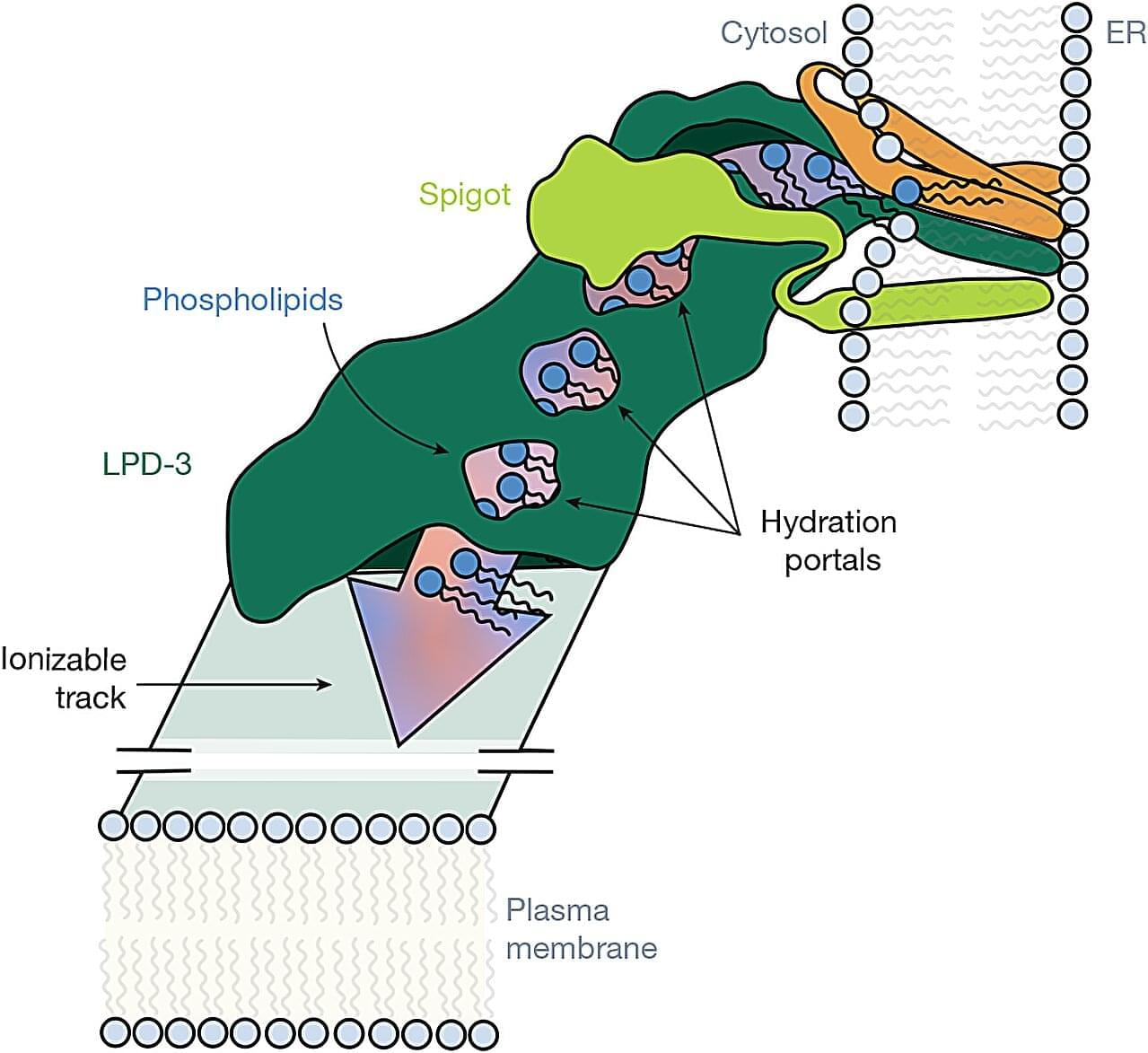Oregon Health & Science University, in collaboration with Oregon State University, has discovered the structural organization and protein components of a lipid-transfer complex known as LPD-3. Findings show that LPD-3 contains an internal tunnel lined with lipid molecules, suggesting a possible mechanism for large-scale lipid movement between cellular membranes.
Cells must constantly manage the structure and makeup of their membranes, which rely heavily on lipids produced in the endoplasmic reticulum (ER). These lipids cannot freely float through the cytoplasm due to their hydrophobic nature.
Lipid-transport proteins have been shown to shuttle small numbers of lipid molecules between compartments. A distinct group, called bridge-like lipid-transport proteins (BLTPs), may support bulk lipid transfer by forming long, tunnel-like structures that span between organelles. Structural analysis of these proteins has remained limited due to their size and biochemical complexity.
